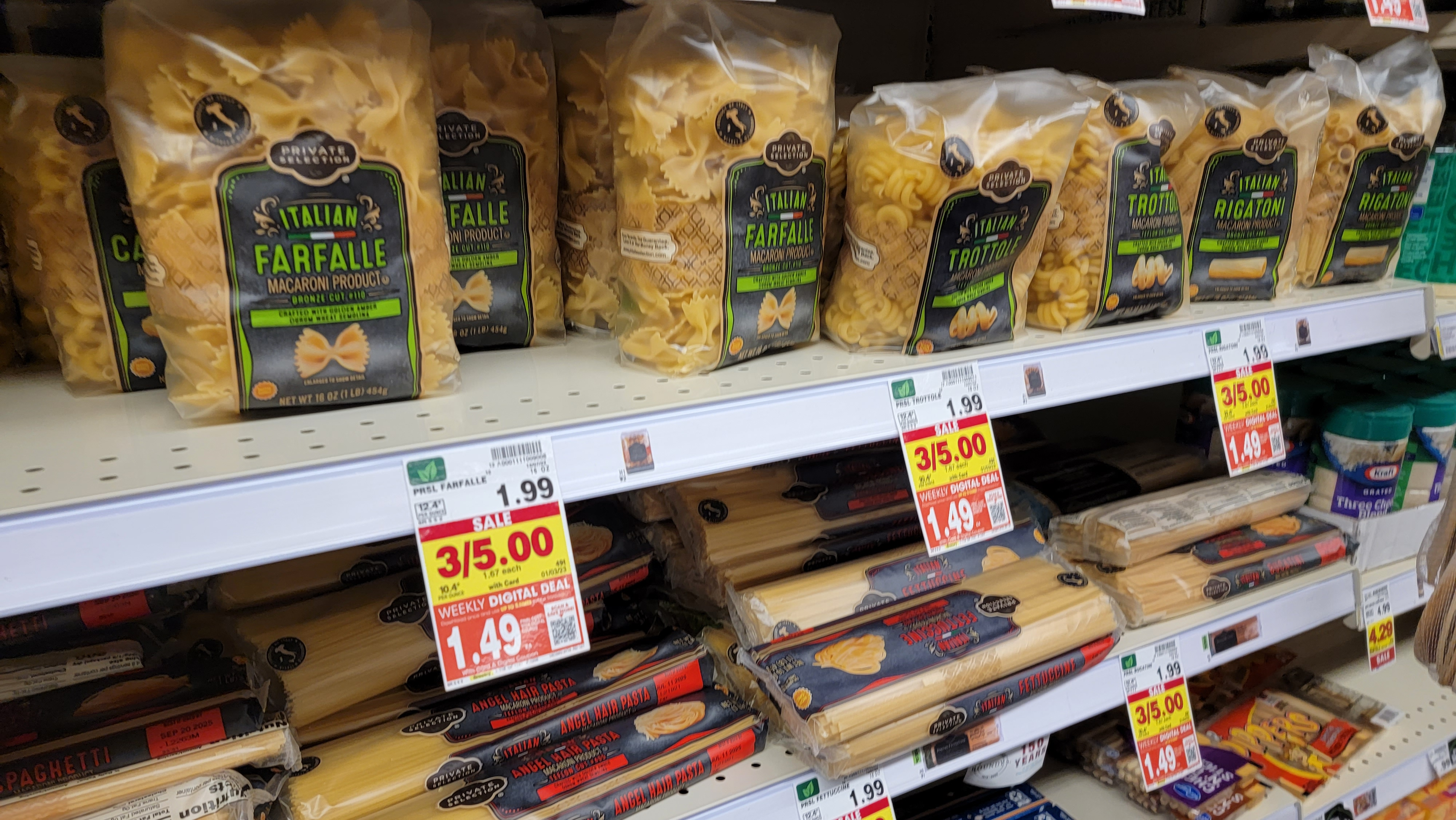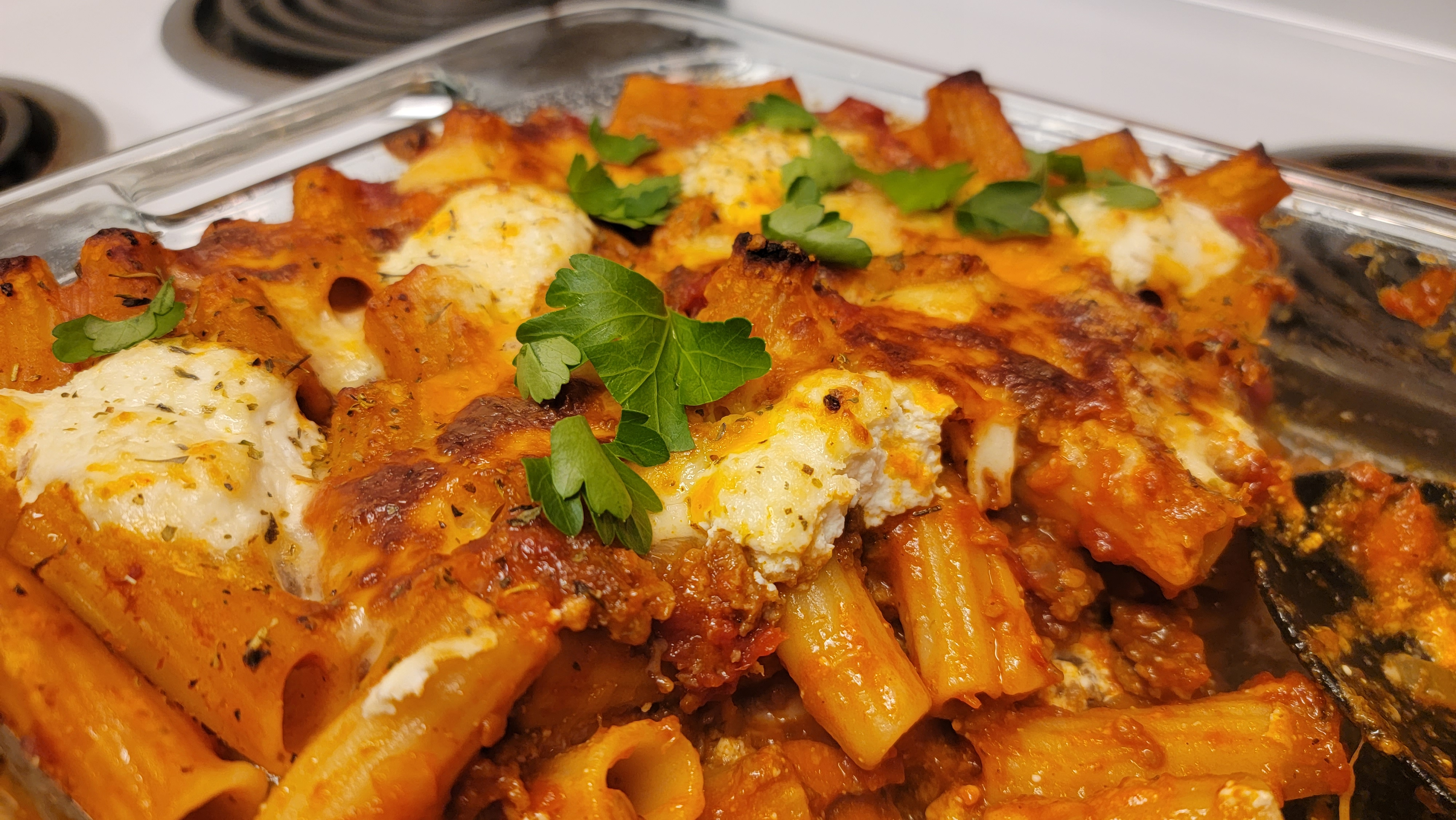Why Chefs Prefer Bronze-Cut Pasta
Many store brands are now making pasta that’s ridged for your pleasure.
If you've been following food trends over the past decade, you'll likely have noticed the term "Bronze Cut" thrown around in the pasta aisle. Packages with these words generally come at a premium, with costs between 50-100% higher than the store-brand alternative.
But as the major grocery chains seek to inject some refinement into their private labels, I've seen the phrase popping up on the shelves at ALDI and Kroger, not just high-end stores. Now I can get a pound of fettuccine snipped with this particular alloy at an increasingly reasonable price.
But what the heck does "bronze cut" or "bronze die" mean, anyway? Is this just another marketing term, like "Artisanal" or "All Natural"? Here's a quick explanation of the pasta trend.

With pasta, the old ways are often best
The difference here is pretty simple, and it all comes down to production. Most store-bought noodles aren't rolled in the factory. Rather, the dough (usually semolina) is extruded through a series of metal cutouts known as pasta dies. History tells us that bronze was once the material of choice for these dies, until slicker materials such as Teflon hit the market.
Unfortunately, this advancement came at a cost. Think back to the pasta you ate as a kid; chances are, you have memories of super-smooth noodles. These are fine and dandy for art projects and school lunches, but in recent years many manufacturers have been switching back to bronze.
Why? The popular kitchen wisdom goes like this: Bronze dies produce pasta with a significantly rougher texture, and these little surface ridges allow your spaghetti to reach out and grab onto the sauce. Food media has been writing about this for decades, and there are plenty of videos out there purporting to show the dramatic effect that bronze-cut pasta has on the final product. Even looking over the package in the store, it's pretty easy to tell the difference.
The science of bronze-cut vs. modern pasta
The differences aren't just skin deep—it turns out the science is a little more complicated. In this video, another popular food YouTuber (with some academic backup) demonstrates that, while there is a slight increase in the amount of sauce retained by the coarser, bronze-cut pasta, the difference is more negligible than we've perhaps been led to expect.
So, is the superiority of bronze dies just another culinary urban legend? No, because there are other factors at play here. Researchers believe that the rougher texture of these noodles allows them to release more starch into the boiling water; thus, when you add a ladle of this pasta water during the final simmer it will result in a thicker sauce. Some also believe that the sauce not only clings better to a bronze-cut noodle, but also has an easier time penetrating the uneven surface.
Either way, pasta extruded through bronze dies has become my product of choice. Whether or not its rougher surface is proven to hold more sauce, you can absolutely detect the added texture as soon as you take a bite. Consumer brands catch a lot of flak (sometimes justifiably) for their cost-cutting and shrinkflation. But when it comes to pasta, "bronze cut" seems to be a rare example where manufacturers are bringing us a legitimately better product at a mass-produced price.

